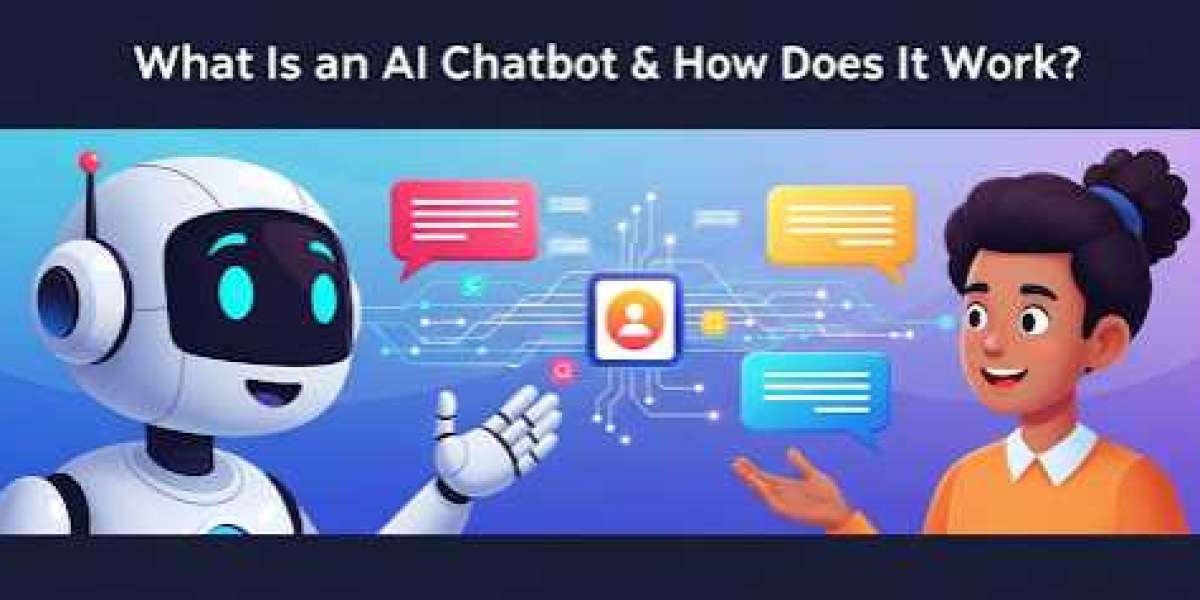In today’s fast-paced digital world, AI chatbots have become a cornerstone of how we interact with technology. From answering customer queries to acting as virtual companions, these intelligent programs are reshaping communication. But what is an AI chatbot how does it work? This article dives deep into the definition, mechanics, components, applications, benefits, challenges, and future of AI chatbots, offering a comprehensive look at this transformative technology.
Defining AI Chatbots
To address what an AI chatbot how it works, we first need to clarify what sets AI chatbots apart. An AI chatbot is a computer program designed to simulate human conversation, using artificial intelligence (AI) and natural language processing (NLP) to understand and respond to user inputs. Unlike traditional chatbots, which relied on pre-programmed scripts and keyword matching, AI chatbots can interpret open-ended questions and provide more natural, context-aware responses.
Popular examples include Apple’s Siri, Amazon’s Alexa, Google Assistant, and OpenAI’s ChatGPT. These chatbots handle tasks ranging from setting reminders to answering complex questions, showcasing their versatility. For instance, when you ask Siri to play your favorite song, it not only understands the request but also executes it, demonstrating the power of AI-driven conversation.
The Mechanics Behind AI Chatbots
Understanding what an AI chatbot is how it works requires a closer look at the technology powering these systems. At their core, AI chatbots rely on NLP, a branch of AI that enables machines to understand and generate human language. Here’s a simplified breakdown of how they function:
- Input Processing: When a user types or speaks a query, the chatbot breaks it down into words or phrases, analyzing the structure and meaning.
- Intent Recognition: Using NLP, the chatbot identifies the user’s intent. For example, if you say, “I need a pizza,” the chatbot recognizes the intent to order food.
- Response Generation: The chatbot retrieves relevant information or performs an action, then crafts a response using natural language generation.
- Context Maintenance: Advanced chatbots maintain conversation context, allowing them to handle follow-up questions like, “Can you make it quick?” without losing track of the topic.
Machine learning and deep learning play a crucial role in this process. Chatbots are trained on vast datasets of conversations, enabling them to recognize patterns and improve over time. Large language models (LLMs), like those powering ChatGPT, enhance their ability to generate coherent and contextually relevant responses. For more details on NLP, check out IBM’s guide on natural language processing.
Key Components of AI Chatbots
To fully grasp what an AI chatbot how it works, we need to examine the components that make these systems tick. AI chatbots are built on several interconnected elements:
- Natural Language Understanding (NLU): NLU interprets user input, identifying intent and extracting key information. Techniques like part-of-speech tagging and named entity recognition help the chatbot understand the query’s structure.
- Natural Language Generation (NLG): NLG crafts responses that sound natural and coherent, selecting appropriate words and phrases based on the intent.
- Dialogue Management: This component ensures smooth conversation flow, tracking context and handling transitions between topics. For example, if you ask about the weather and then say, “What about tomorrow?” the chatbot knows to continue the weather topic.
- Machine Learning and Deep Learning: These technologies enable chatbots to learn from data, improving their accuracy and responsiveness. Deep learning uses neural networks to process complex language patterns, as explained in Salesforce’s AI chatbot overview.
These components work together to create a seamless conversational experience, making AI chatbots feel almost human-like.
Applications of AI Chatbots
Exploring what is an AI chatbot how it works also involves understanding where these chatbots are used. Their versatility makes them valuable across industries:
- Customer Service: Chatbots handle inquiries, troubleshoot issues, and escalate complex cases to human agents, improving efficiency. For example, Zendesk’s AI chatbots streamline customer support.
- Virtual Assistants: Siri, Alexa, and Google Assistant assist with tasks like scheduling, playing media, or providing information, acting as personal helpers.
- Entertainment: Chatbots create interactive experiences, such as virtual companions. For instance, Girlfriend AI offers a chatbot that simulates a romantic relationship, engaging users in personalized conversations that feel authentic and engaging.
- Education: Chatbots provide tutoring, answer student questions, and offer personalized learning experiences.
- Healthcare: They deliver medical information, assist with patient care, or support mental health by offering conversational therapy.
The chatbot market is booming, valued at $4.7 billion in 2022 and projected to reach $15.5 billion in the next few years, according to MarketsandMarkets. This growth reflects their widespread adoption across sectors like e-commerce, banking, and hospitality.
Benefits of AI Chatbots
Knowing what is an AI chatbot how does it work highlights their many advantages:
- 24/7 Availability: Chatbots provide instant responses at any time, unlike human agents who need breaks.
- Cost Savings: By automating routine tasks, chatbots reduce the need for large customer service teams, saving businesses money.
- Improved User Experience: Quick, accurate responses enhance customer satisfaction, as chatbots can handle multiple queries simultaneously.
- Personalization: Chatbots adapt to user preferences, offering tailored responses. For example, an AI girlfriend chat bot can learn a user’s interests and communication style, creating a more engaging interaction.
- Scalability: Chatbots manage high volumes of inquiries without compromising quality, ideal for businesses with large customer bases.
These benefits make AI chatbots a game-changer for both businesses and users, as noted in Capacity’s AI chatbot insights.
Challenges and Limitations
Despite their strengths, understanding what is an AI chatbot how does it work also reveals their limitations:
- Context Challenges: Chatbots may struggle with ambiguous or complex queries, especially if the context is unclear.
- Emotional Understanding: While they can simulate empathy, chatbots often lack the ability to fully grasp human emotions.
- Conversation Flow: Maintaining a natural dialogue, especially with follow-up questions, can be difficult.
- Ongoing Training: Chatbots require continuous updates and training to stay relevant and accurate.
These challenges highlight the need for ongoing development, as discussed in Giosg’s chat bot blog.
The Future of AI Chatbots
Looking ahead, what is an AI chatbot how it works will continue to evolve with advancements in AI and NLP. Future chatbots may:
- Handle more complex tasks, such as advanced problem-solving or creative content generation.
- Integrate with technologies like the Internet of Things (IoT) or augmented reality (AR) for immersive experiences.
- Offer even greater personalization through improved learning algorithms.
Generative AI, which creates new content based on patterns, will likely play a bigger role, as seen in tools like ChatGPT. For more on generative AI, see IBM’s generative AI blog.
Conclusion
In summary, what is an AI chatbot how does it work? AI chatbots are intelligent programs that use NLP, machine learning, and deep learning to simulate human conversation, offering applications from customer service to entertainment. They provide benefits like 24/7 availability and personalization but face challenges in understanding complex queries. As a developer, I’ve explored this technology by creating a clone of Candy AI, a popular chatbot, and added it to my portfolio, gaining hands-on insight into their complexity. With a rapidly growing market and ongoing advancements, AI chatbots are poised to shape the future of digital interaction.

![[ |+91–9999273763] Call Girls IN Dwarka Metro Delhi Ncr](https://freakish.life/upload/photos/2025/01/cO5ZaPMkcbEbpegdAHvd_17_bbd0cd2e890757fc6b369fa4b8538641_image.jpg)
